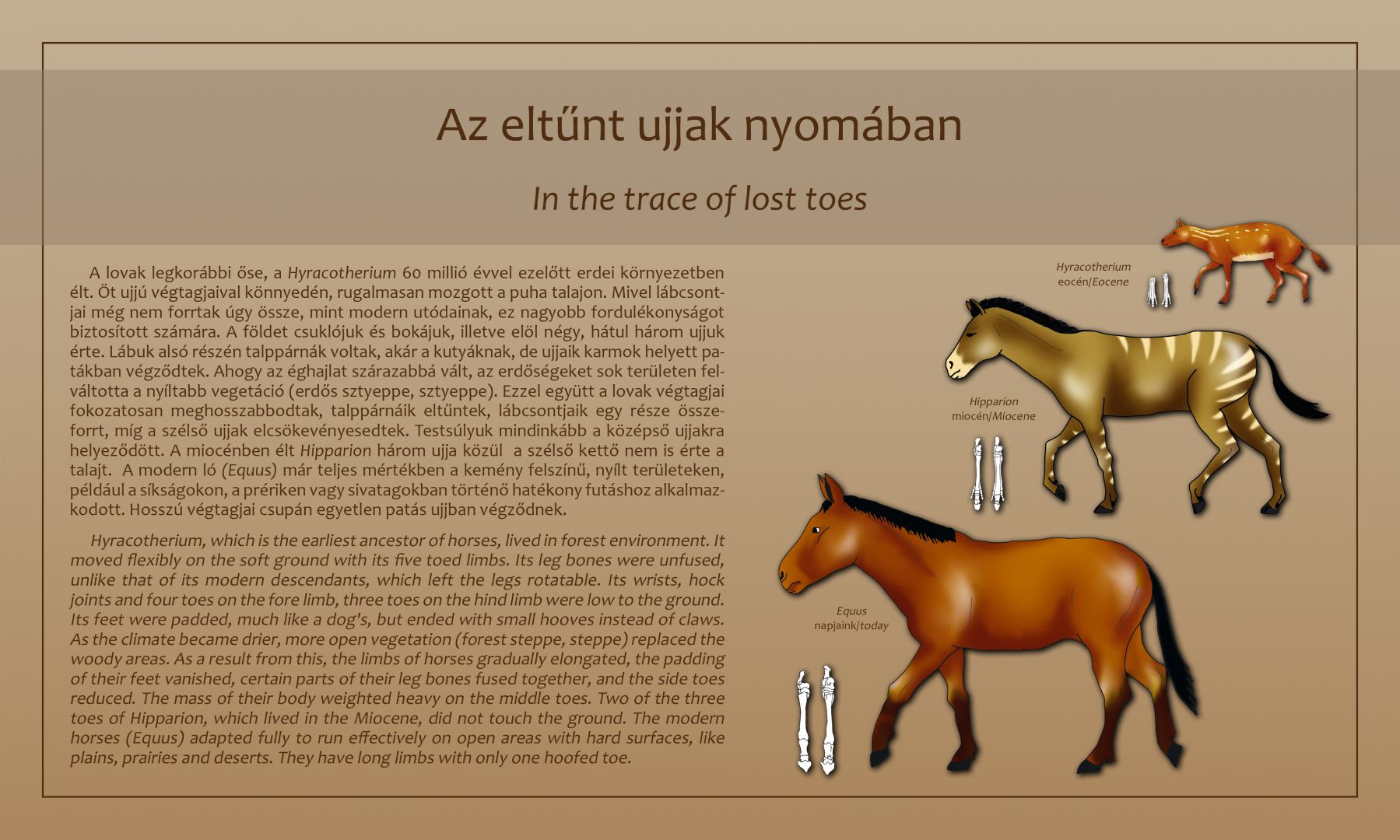MIOCENE FAUNA - 2. view
In the trace of lost toes
Hyracotherium, which is the earliest ancestor of horses, lived in forest environment. It moved flexibly on the soft ground with its five toed limbs. Its leg bones were unfused, unlike that of its modern descendants, which left the legs rotatable. Its wrists, hock joints and four toes on the fore limb, three toes on the hind limb were low to the ground. Its feet were padded, much like a dog's, but ended with small hooves instead of claws. As the climate became drier, more open vegetation (forest steppe, steppe) replaced the woody areas. As a result from this, the limbs of horses gradually elongated, the padding of their feet vanished, certain parts of their leg bones fused together, and the side toes reduced. The mass of their body weighted heavy on the middle toes. Two of the three toes of Hipparion, which lived in the Miocene, did not touch the ground. The modern horses (Equus) adapted fully to run effectively on open areas with hard surfaces, like plains, prairies and deserts. They have long limbs with only one hoofed toe.
